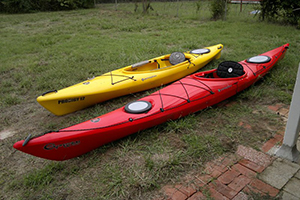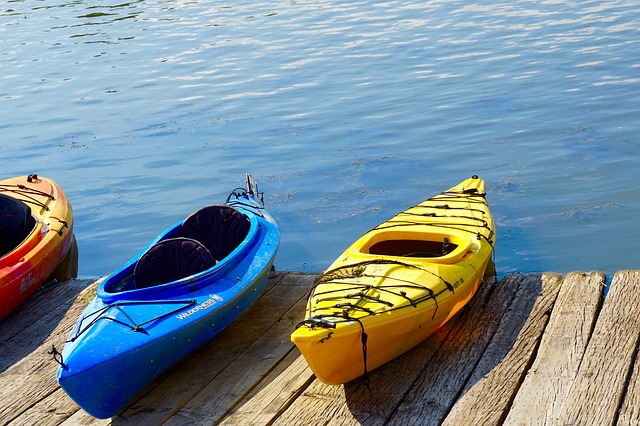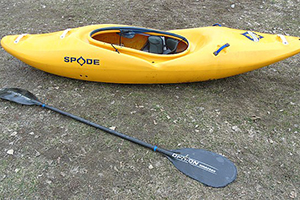Kayaking in Southern Ontario
Author: Zehua J.
Level: 7
Instructor: Olga T.
Photo Credit: 86421067 / By Dr-malcolm-brigden / CC BY-SA 4.0
Article ID: 2230 [Activity- Fall 2021]
Ontario is located in great lakes area and there are plenty of beautiful lakes, water streams, rivers and lots of kinds of splendid creatures around them. Kayak is one of the most flexible and affordable playing tools on water. If you can play kayak, you will get another different sight view of Canada. In this article I will take readers a glance about Kayaking from equipment, locations, time and security aspects.
First, there are about 4 kinds of kayaks which are angler kayak, recreation kayak, whitewater kayak and touring kayak.

Angler kayak (left) and touring kayak (right)
Photo Credit: Jonathan C. Wheeler / Flickr (Creative Commons)

Recreational kayak
Photo Credit: vonpics / Pixabay (Creative Commons)

Whitewater kayak
Photo Credit: Kahvilokki / Wikimedia (Creative Commons)
As pictures shown above, the angler kayak provides an open space to sit on which means more room for storage and is easy to access, but easy to capsize as well for higher gravity center. The recreation kayak is almost the same size but sit-in structure which means lower gravity center and more stability but still could capsize. Players have to practice recover and reenter it before enjoying any kind of them. The whitewater kayak is shorter and has round bottom which provide it super flexibility to make turns, while it’s harder to go straight on still water. The touring kayak is the longest and slimmest kind in all of these ones which gives it super impressive performance on touring racing but a little harder to make small turns. Player need to choose which kind is good for herself/himself.
Secondly, there are lot of sites and lines for kayaking in southern Ontario. As I know, if you’d like play on still water, you have many choices along Lake Ontario like from Cliff Park in Scarborough to Woodbine beach, or Cherry beach around the Toronto Islands, or Port Credit to Jack Darling Park in Mississauga. You can play in any of other lake like Wilcox, Heart Lake or Lake Simcoe. There are many amenities for kayaking along rivers like Rouge River, Humber River, Credit River, Bronte Creek and 16 Miles Creek. Some of them are exciting rapid current of white water and others are quiet relaxing still water.
Thirdly, when is good time for kayaking? Well, any season could be good but we need focus on the water height, water temperature and safety equipment. Every time before departure for a site, remember to check the real-time hydrometric data graph provided by Environment and Natural Resources of Canada to ensure the water level is proper for the sports: https://wateroffice.ec.gc.ca/report/real_time_e.html?stn=02HBO29 The higher level, the faster current. The lower level, the more likely to go aground in the shallow zone. When the water temperature goes lower than 15 degree Celsius, wet suit will be recommended. When 5 degree Celsius or lower, dry suit will be recommended to be taken. Enough drinking water is always needed especially in hot days.
Finally, security is the key to this sport. Check the weather forecast before departure. If the wind is stronger than 8m/s, or waves are higher than 0.3m, you’d better stay on land. Watch out the big boats all the way because the kayak is very low and they might not notice it. Stay away from sweepers, strainers and undercut banks when floating as they could be deadly dangerous in flowing rivers. Never drafting down a dam or spillway before you get trained well.